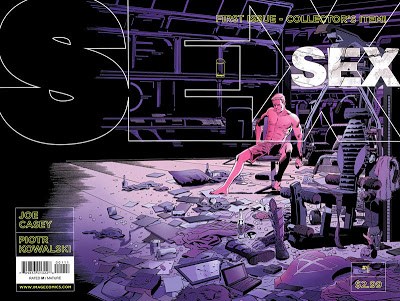Just a few notes to pass the time while I try to find some time to read a few comics to write about here.
- I will be attending San Diego Comic-Con on Thursday only! This will be my first trip to the Big Show in three years, I think. Very much looking forward to it! Anyone know of any particularly good new COMICS projects I should check out while I’m there? I think it’s cool that Kazuo Koike is going to be there, though I doubt I’ll be at all inclined to stand in a long line to meet him. Anyway, if you see me, say hi. I expect I will be mostly on the floor and avoiding the lines to get into panels, with one exception …
- That exception is the reason for my visit. I will be appearing on the Sequart: Advancing Comics as Art panel, Thursday at 1:30 p.m. in room 24ABC. Sequart, in case you don’t know (and if you’re reading this blog, how come you don’t know?) published my book, Mutant Cinema: The X-Men Trilogy from Comics to Screen. They also have gotten into the movie business, with Grant Morrison: Talking with Gods, Warren Ellis: Captured Ghosts, and a bunch of upcoming projects. I helped out a bit with their upcoming release, Comics in Focus: Chris Claremont’s X-Men. I was interviewed for the film and provided some additional assets for the shoot. I’ll be appearing on the panel to support this film and the filmmakers, Patrick Meaney and Jordan Rennart, as well as Sequart founder Julian Darius. There should be lots of good stuff going on, so if you can attend only one panel at Comic-Con (lucky you!), make it this one!
- Pacific Rim is a really fun movie. As I mentioned, I saw it a while back and wrote about the VFX work on the film for an upcoming issue of Animation Magazine (who also will be at Comic-Con, stop by booth 1535!) and with its release now imminent, I have to say I really had a fun time with this movie. It’s crazy insane in all the right ways. And it’s an original film! Not a sequel, not a reboot, not an adaptation — not a hoax! It’s really cool and I think anyone who gives the movie a chance will be pleasantly surprised if not turned into a big fan.
- Additional movie fun: Both Monsters University and Despicable Me 2 are also a lot of fun. I wrote extensively about MU for Animag – check out the cover story here — and it’s funny and cool and looks great, through without rising to the level of Pixar’s best. Me 2 impressed me with the quality of its animation, which looks absolutely terrific. The minions are hilarious and Steve Carell is really good as the weirdo Gru. Again, not quite as innovative as the first one, but still worth the time.
- I caught both those films — along with The Internship and a second viewing of Man of Steel — at the Vineland Drive-In Theater in City of Industry, Calif. This is an ideal setting for parents like myself, as 2-year-old Kaya can make all the noise in the car she wants without disturbing anyone else and then, after she falls asleep, my wife and I can enjoy a second movie for less than the price of one at the Arclight or a similar arena. The image quality is quite good, and the sound comes in over the FM radio, and it’s a better experience by far than it was when I was a kid and you had to listen through those little window-mounted mono speakers. Drive-ins are few and far between these days, so I want to call attention to this little gem because it’s a fun experience that I think many movie buffs with young families would enjoy.






























